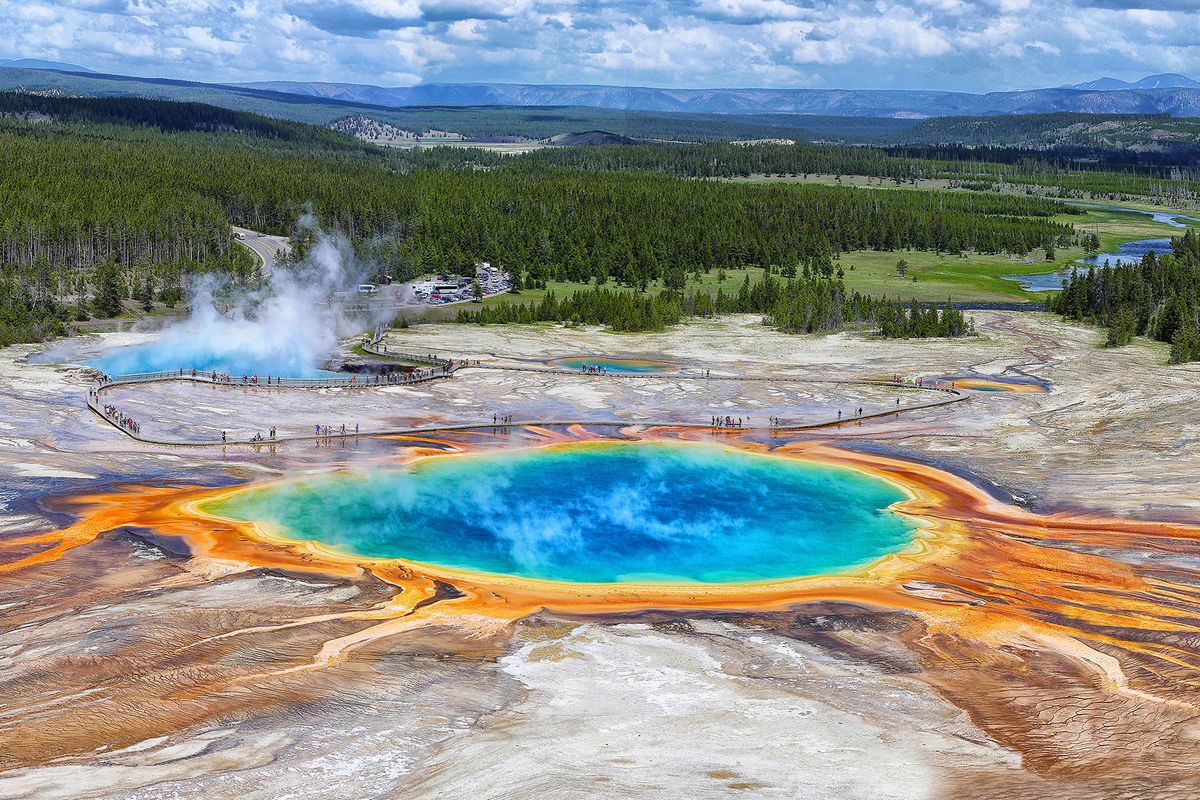Wyoming’s Hidden Technicolor Geothermal Wonders

Have you ever wondered what makes Wyoming's geothermal features so colorful? The answer lies in the unique combination of minerals, heat-loving bacteria, and extreme temperatures. These elements create a stunning palette of reds, oranges, yellows, and greens that seem almost otherworldly. Yellowstone National Park, home to many of these vibrant hot springs and geysers, offers a front-row seat to nature's artistry. From the iconic Grand Prismatic Spring to lesser-known gems like the Morning Glory Pool, each site showcases a different aspect of geothermal beauty. Ready to learn more about these natural wonders? Let's dive into the science behind Wyoming's technicolor geothermal features.
Wyoming's Hidden Technicolor Geothermal Wonders
Wyoming, known for its rugged landscapes and vast wilderness, hides some of the most vibrant geothermal features in the world. These natural wonders, bursting with color and life, offer a unique glimpse into the Earth's fiery heart. Let's journey through Wyoming's hidden technicolor geothermal wonders.
1. Grand Prismatic Spring
The Grand Prismatic Spring in Yellowstone National Park is a sight to behold. Its vivid colors, ranging from deep blues to fiery reds, are caused by heat-loving bacteria. This massive hot spring is the largest in the United States and the third largest in the world.
2. Morning Glory Pool
Morning Glory Pool, also in Yellowstone, is named for its striking resemblance to the morning glory flower. The pool's brilliant blue center is surrounded by rings of yellow, green, and orange, created by different types of bacteria thriving in the varying temperatures.
3. Norris Geyser Basin
Norris Geyser Basin is the hottest and most dynamic geyser basin in Yellowstone. It features a variety of geothermal features, including geysers, hot springs, and fumaroles. The basin's acidic waters and vibrant colors make it a must-see.
4. Mammoth Hot Springs
Mammoth Hot Springs is a complex of hot springs on a hill of travertine terraces. These terraces, formed by the deposition of calcium carbonate, are constantly changing shape and color. The springs' milky white, orange, and brown hues create a stunning landscape.
5. West Thumb Geyser Basin
West Thumb Geyser Basin, located on the shores of Yellowstone Lake, offers a unique combination of geothermal features and stunning lake views. The basin's colorful hot springs and geysers, such as Abyss Pool and Black Pool, are surrounded by the deep blue waters of the lake.
6. Black Sand Basin
Black Sand Basin, near the Old Faithful area, is known for its striking black sand and colorful hot springs. The basin's most famous features include the Emerald Pool, Rainbow Pool, and Sunset Lake, each showcasing a dazzling array of colors.
7. Biscuit Basin
Biscuit Basin, also near Old Faithful, is named for the biscuit-like formations that once surrounded its Sapphire Pool. Although the formations were destroyed by an earthquake, the basin still boasts vibrant hot springs and geysers, including the stunning Jewel Geyser.
8. Fountain Paint Pot
Fountain Paint Pot, located in the Lower Geyser Basin, is a unique geothermal feature that changes with the seasons. In the spring and summer, the pot is filled with bubbling mud, while in the fall and winter, it becomes a steaming hot spring. The pot's colorful mud is created by the interaction of heat, water, and minerals.
9. Artists' Paintpots
Artists' Paintpots, also in the Lower Geyser Basin, is a collection of colorful hot springs, mud pots, and fumaroles. The area gets its name from the vibrant colors of the mud and water, which resemble an artist's palette. The constantly changing landscape makes it a fascinating place to visit.
10. Shoshone Geyser Basin
Shoshone Geyser Basin, located in the remote southwest corner of Yellowstone, is one of the park's least visited geothermal areas. The basin features numerous geysers, hot springs, and fumaroles, many of which are brightly colored. The area's isolation and beauty make it a hidden gem.
11. Heart Lake Geyser Basin
Heart Lake Geyser Basin, situated near the southern boundary of Yellowstone, is a remote and pristine geothermal area. The basin's hot springs and geysers, such as Rustic Geyser and Surprise Pool, are surrounded by the stunning scenery of Heart Lake and the Absaroka Range.
12. Lone Star Geyser
Lone Star Geyser, located in the backcountry of Yellowstone, is a cone geyser that erupts approximately every three hours. The geyser's eruptions, which can reach heights of 45 feet, are accompanied by a brilliant display of colors created by the minerals in the water. The hike to Lone Star Geyser offers a peaceful and scenic experience.
Embrace the Vibrant Beauty of Wyoming's Geothermal Wonders
Wyoming's geothermal features are a sight to behold. From the vivid colors of the Grand Prismatic Spring to the steaming geysers of Yellowstone, these natural wonders offer a unique experience. Each visit reveals something new, whether it's the bubbling mud pots or the crystal-clear hot springs. The geothermal activity not only creates stunning visuals but also supports a diverse ecosystem. Exploring these areas provides a deeper appreciation for nature's power and beauty. Remember to respect the environment by staying on designated paths and following park guidelines. This ensures these wonders remain pristine for future generations. So, pack your bags, grab your camera, and get ready to witness the technicolor marvels of Wyoming. It's an adventure you won't forget.

